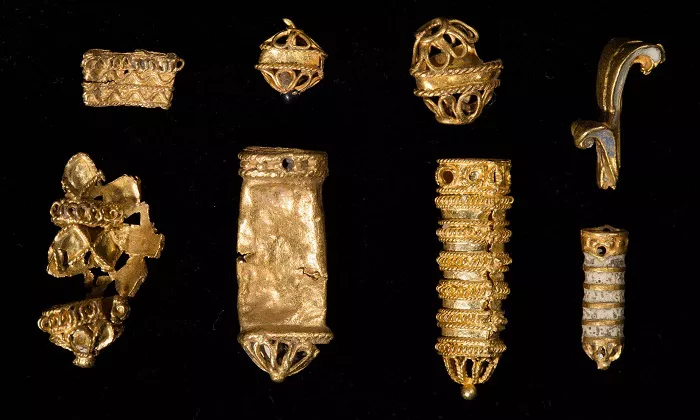An Egyptian archaeological mission, a joint effort by the Supreme Council of Antiquities and the Zahi Hawass Foundation for Archaeology and Heritage, has unveiled the tomb of Prince Waser-If-Re, the son of King Userkaf, the first ruler of Egypt’s Fifth Dynasty. The remarkable discovery was made in Saqqara, a region known for its historical significance, where the prince’s tomb was found alongside a wealth of artifacts spanning from the Old Kingdom to the Late Period.
King Userkaf, who reigned from 2494 to 2487 BC, is believed to have ruled for approximately seven years. The newly discovered tomb, dating back nearly 4,500 years, provides insight into the royal lineage and the intricate tomb-building practices of Egypt’s ancient rulers. Although Prince Waser-If-Re did not ascend to the throne, his tomb offers valuable archaeological evidence about the era.
Egypt’s Minister of Tourism and Antiquities, Sherif Fathy, lauded the discovery, emphasizing its significance as a “milestone in uncovering new layers of Egypt’s rich and ancient history.” He also expressed pride that the excavation was entirely led by Egyptian experts.
One of the most extraordinary features of the tomb is a massive false door made of pink granite, standing 14 feet tall and 4 feet wide. This door, the first of its kind to be found in Egypt, is inscribed with numerous titles of the prince, including “Hereditary Prince,” “Governor of Buto and Nekheb,” “Royal Scribe,” and “Vizier,” reflecting his important role in ancient Egypt despite his lack of succession to the throne.
The discovery also revealed an exceptional collection of statues depicting King Djoser, his wife, and their ten daughters. These statues, believed to have been originally housed near Djoser’s Step Pyramid, were later moved to Prince Waser-If-Re’s tomb during the Late Period. Zahi Hawass, a prominent figure in Egyptian archaeology, hailed the discovery as “rare and important,” noting that it is the first time a statue group of King Djoser’s family has been found.
Among other significant finds at the site are a red granite offering table inscribed with ritual offerings and a black granite statue dating back to the 26th Dynasty. This suggests that the tomb may have been repurposed during later periods. Furthermore, archaeologists discovered a secondary granite entrance to the tomb, which includes inscriptions and a cartouche of King Neferirkare, the third pharaoh of the Fifth Dynasty.
The excavation also uncovered 13 pink granite statues placed on high-backed chairs, some of which represent the prince’s wives. The statues, unique to Saqqara, include two headless figures and a tipped-over black granite statue.
Excavations continue, with the archaeological team describing the tomb as one of the most distinctive in the Saqqara region, a site renowned for its historical importance. Zahi Hawass reiterated the significance of Saqqara, stating, “Every discovery here brings us closer to understanding the complexity of our ancient civilization.”
Saqqara, which served as the necropolis for Egypt’s ancient capital, Memphis, contains numerous pyramids and royal tombs. Located approximately 18 miles south of Cairo, the site is famed for the Pyramid of Djoser, the oldest known complete stone building complex in Egypt. Today, Saqqara is a UNESCO World Heritage Site, highlighting the immense historical value of its ruins and artifacts.

